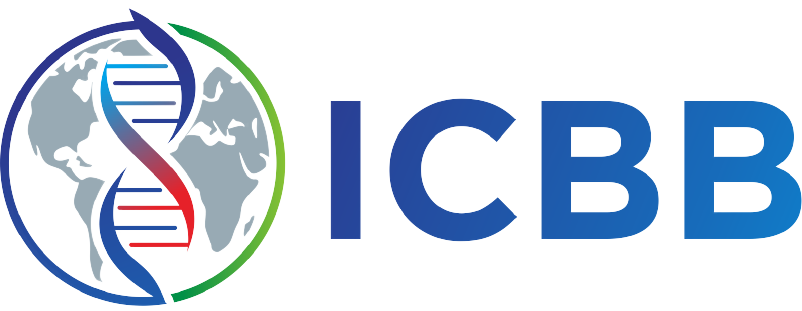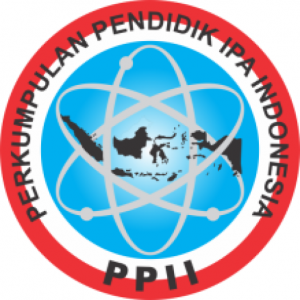Morphometric Characterization Study of Apis cerana Worker Bees in North Lombok Regency
Authors
Erwan Erwan , Muhammad Muhsinin , Dany Alfian HerlambangDOI:
10.29303/jbt.v25i1.8490Published:
2025-02-14Issue:
Vol. 25 No. 1 (2025): Januari - MaretKeywords:
Apis cerana; Honeybee conservation; Morphometric characteristics; North Lombok apicultureArticles
Downloads
How to Cite
Downloads
Metrics
Abstract
Honeybees (Apis cerana) are one of the indigenous honeybee species of Asia. They serve a crucial function in ecosystems, mostly as pollinators. This study investigates the morphometric characteristics of Apis cerana worker bees in North Lombok Regency, focusing on two beekeeping groups: Harapan Keluarga and Tunas Muda, located in Salut village, Kayangan District North Lombok Regency. Morphometric analysis was conducted on 40 colonies, with measurements taken from eight key body traits: body length, abdomen length, femur length, tibia length, metatarsus length, forewing length, hindwing length, and body weight. Results revealed significant differences between the two locations. Tunas Muda bees exhibited larger morphometric traits with lower coefficient variations, indicating higher population uniformity. Correlation and regression analyses showed that body length, forewing length, and abdomen length strongly influence body weight, with body length having the highest correlation (r = 0.85) and determination coefficient (R2 = 0.722). The study highlights the impact of environmental factors, management practices, and nutritional conditions on bee morphology. These findings provide critical insights for enhancing beekeeping practices, supporting honeybee conservation efforts, and exploring genetic and physiological adaptations in Apis cerana. This research underscores the importance of integrating morphometric analysis into sustainable apiculture and biodiversity conservation strategies in North Lombok.
References
Araujo, E. D., Costa, M., Chaud-Netto, J., & Fowler, H. G. (2004). Body size and flight distance in stingless bees (Hymenoptera: Meliponini): inference of flight range and possible ecological implications. Brazilian Journal of Biology, 64(3b), 563–568. https://doi.org /10.1590/s1519-69842004000400003
Bhatta, V. R., & A, N. K. (2022). Morphometric Characters of Apis cerana indica Worker Bees under Urban, Rural and Wild Habitats. Applied Ecology and Environmental Sciences/Applied Ecology and Environmental Science, 10(10), 614–621. https://doi.org/ 10.12691/aees-10-10-3
Bouga, M., Alaux, C., Bienkowska, M., Büchler, R., Carreck, N. L., Cauia, E., Chlebo, R., Dahle, B., Dall’Olio, R., De La Rúa, P., Gregorc, A., Ivanova, E., Kence, A., Kence, M., Kezic, N., Kiprijanovska, H., Kozmus, P., Kryger, P., Conte, Y. L., . . . Wilde, J. (2010). A review of methods for discrimination of honey bee populations as applied to European beekeeping. Journal of Apicultural Research, 50(1), 51–84. https://doi.org/ 10.3896/ibra.1.50.1.06
Czekońska, K., Łopuch, S., & Miścicki, S. (2023). The effect of meteorological and environmental variables on food collection by honey bees (Apis mellifera). Ecological Indicators, 156, 111140. https://doi.org/10.1016/j.ecolind.2023.111140
Dziechciarz, P., Borsuk, G., & Olszewski, K. (2021). Possibility to change the body size in worker bees by a combination of small-cell and standard-cell combs in the same nest. Apidologie, 52(6), 1017–1032. https://doi.org/10.1007/s13592-021-00884-4
Erwan, E., & Agussalim, A. (2022). Honey quality from the bee Apis cerana, honey potency produced by coconut and sugar palm saps. Biodiversitas Journal of Biological Diversity, 23(11). https://doi.org/10.13057/biodiv/d231139
Erwan, E., Franti, L. D., Purnamasari, D. K., Muhsinin, M., & Agussalim, A. (2021). Preliminary Study on Moisture, Fat, and Protein Contents of Bee Bread From Apis cerana from Different Regions in North Lombok Regency, Indonesia. TERNAK TROPIKA Journal of Tropical Animal Production, 22(1), 35–41. https://doi.org/10.21776/ub.jtapro.2021.022.01.5
Frunze, O., Kim, D., Kang, E., Kim, K., Park, B., & Choi, Y. (2022). The accuracy of morphometric characteristic analysis depends on the type of the assessed traits of honey bees (Apis cerana F. and Apis mellifera L.). Journal of Asia-Pacific Entomology, 25(4), 101991. https://doi.org/10.1016/j.aspen.2022.101991
Gajger, I. T., & Mutinelli, F. (2024). Impact of environmental factors and management practices on BeE health. Insects, 15(12), 996. https://doi.org/10.3390/insects 15120996
Grula, C. C., Rinehart, J. P., Greenlee, K. J., & Bowsher, J. H. (2021). Body size allometry impacts flight-related morphology and metabolic rates in the solitary bee Megachile rotundata. Journal of Insect Physiology, 133, 104275.
Jasmi, N. (2022). Variation in Morphometric Characteristic of Apis cerana Fabricius (1793) (Hymenoptera: Apidae) from Various Altitudes in West Sumatra. Jurnal Biologi Indonesia, 18(1), 79–90. https://doi.org/10.47349/jbi/18012022/79
Lozier, J. D., Parsons, Z. M., Rachoki, L., Jackson, J. M., Pimsler, M. L., Oyen, K. J., Strange, J., & Dillon, M. E. (2021). Divergence in body mass, wing loading, and population structure reveals Species-Specific and potentially adaptive trait variation across elevations in Montane bumble bees. Insect Systematics and Diversity, 5(5). https://doi.org/10.1093/isd/ixab012
Mattiello, S., Rizzi, R., Cattaneo, M., Martino, P. A., & Mortarino, M. (2022). Effect of queen cell size on morphometric characteristics of queen honey bees (Apis mellifera ligustica). Italian Journal of Animal Science, 21(1), 532–538. https://doi.org/10.1080/1828051x. 2022.2043790
Mountcastle, A. M., Ravi, S., & Combes, S. A. (2015). Nectar vs. pollen loading affects the tradeoff between flight stability and maneuverability in bumblebees. Proceedings of the National Academy of Sciences, 112(33), 10527–10532. https://doi.org/10.1073/pnas.1506126112
Novita, N., Saepudin, R., & Sutriyono, S. (2013). Analisis Morfometrik Lebah Madu Pekerja Apis cerana Budidaya pada Dua Ketinggian Tempat yang Berbeda. Jurnal Sain Peternakan Indonesia, 8(1), 41–56. https://doi.org/10.31186/jspi. id.8.1.41-56
Prastiyo, A., Nuraeni, S., & Budiaman, B. (2024). Morphology and morphometric of Tetragonula biroi bees at three different altitudes in South Sulawesi, Indonesia. Biodiversitas Journal of Biological Diversity, 25(5). https://doi.org/10.13057/biodiv/d250516
Pudasaini, R., Dhital, B., & Chaudhary, S. (2020). Nutritional requirement and its role on honeybee: a review. Journal of Agriculture and Natural Resources, 3(2), 321–334. https://doi.org/10.3126/ janr.v3i2.32544
Sauthier, R., Price, R. I., & Grüter, C. (2016). Worker size in honeybees and its relationship with season and foraging distance. Apidologie, 48(2), 234–246. https://doi.org/10.1007/s13592-016-0468-0
Shawer, M. B., Taha, E. A., Mousa, K. M., Khan, K. A., Ibrahim, S., Hassan, S., & Elnabawy, E. M. (2021). Seasonal variations of colony activities linked to morphometric and glands characterizations of hybrid Carniolan honey bee (Apis mellifera carnica Pollmann) workers. Journal of King Saud University - Science, 33(6), 101543. https://doi.org/10.1016/j.jksus. 2021.101543
Slater, G. P., Yocum, G. D., & Bowsher, J. H. (2020). Diet quantity influences caste determination in honeybees ( Apis mellifera ). Proceedings of the Royal Society B Biological Sciences, 287(1927), 20200614. https://doi.org/ 10.1098/rspb.2020.0614
Wei, J., Rico-Guevara, A., Nicolson, S. W., Brau, F., Damman, P., Gorb, S. N., Wu, Z., & Wu, J. (2023). Honey bees switch mechanisms to drink deep nectar efficiently. Proceedings of the National Academy of Sciences, 120(30). https://doi.org/10.1073/pnas.2305436120
Widiawati, H., Nabiilatunnisa, N., & Soesilohadi, R. H. (2020). The morphometric of worker honey bee, Apis cerana Fabr. (Hymenoptera: Apidae) from bee farm in different ecosystem from district of Gunungkidul and Kulonprogo. AIP Conference Proceedings, 2260, 020021. https://doi.org/10.1063/5.0016449
License
Copyright (c) 2025 Erwan Erwan, Muhammad Muhsinin, Dany Alfian Herlambang

This work is licensed under a Creative Commons Attribution 4.0 International License.

Jurnal Biologi Tropis is licensed under a Creative Commons Attribution 4.0 International License.
The copyright of the received article shall be assigned to the author as the owner of the paper. The intended copyright includes the right to publish the article in various forms (including reprints). The journal maintains the publishing rights to the published articles.
Authors are permitted to disseminate published articles by sharing the link/DOI of the article at the journal. Authors are allowed to use their articles for any legal purposes deemed necessary without written permission from the journal with an acknowledgment of initial publication to this journal.


























